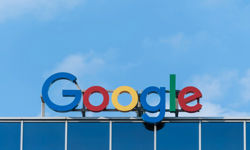
Recently, Stagwell’s ‘Future of News’ event showcased a HarrisX study into a topic that remains highly relevant for publishers and advertisers alike: brand safety. The study of 22,000 UK adults looked at whether audiences react negatively to brands whose ads appear alongside “unsafe” news content.
The answer was decisive and unequivocal: they don’t. Among the eight brand reputational metrics tested against ads in ‘brand safe’ (eg. business, sport, entertainment) and ‘not brand safe’ (eg. Middle East, crime, inflation) placements, there was no discernible difference measured across eight key audiences.
After the research, we heard from two passionate panels of journalists and marketeers. The message was loud and clear: real news has human interest at its heart and brand safety must come from the same place.
Right idea, bad execution?
It’s our collective role in media to ensure brand advertising gets in front of the right audience at the right time for optimum impact and ROI, all avoiding any spaces that might land a brand in any reputational hot water.
The problem with brand safety in news brands is that removing advertising from hard news can well be to the detriment of everything marketers are trying to achieve.
Online advertising has been under the spotlight ever since an investigation from The Times in 2017 found big brands were unwittingly funding terrorism, supremacism and pornography by advertising on those groups’ sites and videos.
In response, programmatic systems developed blacklists, whitelists and blocklists to shelter brands from harmful content. However, whether accidentally or intentionally (some brands avoid online hard news altogether in a way they wouldn’t in print), advertisers are missing out on content providing great reach, engagement and contextual relevance.
Newsworks’ own research ‘The hard news project’ supports the Stagwell/HarrisX findings. Our neuroscientific study also found hard news has no negative impact on advertising content.
Indeed, such an environment delivers an incremental benefit to advertisers. Average ad dwell time is 1.4 times higher in hard news environments. Brains exposed to ads in hard news environments show greater likelihood of key messages being encoded into memory. What’s more, ads in both hard and soft news environments deliver strong engagement due to their personal relevance for the reader.
Using a sledgehammer to crack a nut
If this is really about brand safety, then the practices we use are blunt instruments for such a delicate matter; they overlook contextual matter but, perhaps most importantly, they overlook the audience.
Time and again, research shows us that audiences understand the relationship between the content they’re reading and brands appearing alongside it — regardless of whether they’re reading about news, sport, politics or anything else.
If we know this, then as Mark Penn, chairman and CEO at Stagwell asked: “What is all the fuss about?” Shouldn’t we be trusting our audiences more? After all, trust is key in any relationship, particularly when it comes to readers and their preferred news brands.
That relationship stands in stark contrast against the onslaught of fake news, whose detrimental effects on people and society are only becoming starker. As a result, people are turning to regulated news sources for information they trust.
A Newsworks survey showed how audiences want evidence-based reporting over the social media rumour mill. 65% of people believed quality journalism can help combat the spread of misinformation. Six in 10 use reputable sources such as news brands, TV and radio news to fact-check what they read online.
As the original influencers, news brands are well-placed to continue to fly the flag for the quality, trusted journalism consumers are seeking. With digital audiences at huge scale across every medium, their content is regulated, trusted, engaging and brand safe. Moreover, publishers’ extensive first-party data capabilities mean brands can engage effectively and efficiently in environments that know their audience like the back of their hand.
However, this future isn’t guaranteed. Isn’t it ironic that the unsafe, untrusted, unregulated environments brands should avoid are often created by poor uses of technology, only for us to use more poor technology to keep brands out of the trusted, quality journalism that audiences want?
What it comes down to is the human touch — not only in harnessing technology’s power for good, but also what sets journalism apart from unregulated content. Journalism is a commitment to telling human stories, to investigation, to fact-checking and regulation.
Perhaps we should trust humans a little more when it comes to deciding what is brand safe.












